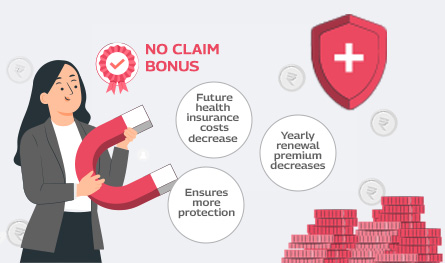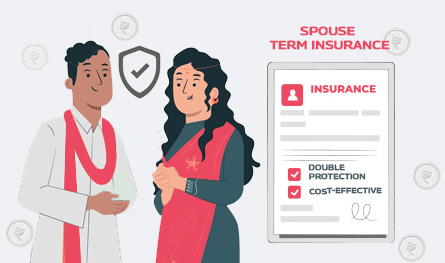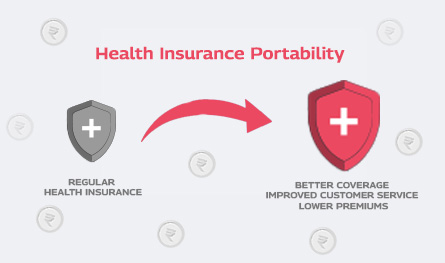Different types of Traffic Signs in India – Know Everything
.png)
It is important to know about different traffic signs in India before you start driving your vehicle on the road. Do you know all about them? Read on to find out.
Traffic signs help to avoid fatal risks on the road by working as road markings and by explaining to drivers as well as people on foot the exact meaning of what a sign connotes so that any mishap on the road can be avoided. Every day as many as 400 accidents take place on the Indian roads causing great damage to people’s lives. By following the traffic rules, it is possible to avoid such accidents to a certain extent.Thus, it is necessary for every driver and pedestrians to know about the 3 primary categories of traffic signs in India to make sure that road safety can be maintained.
.png)
3 Important Types of Traffic Signals in India
Knowing all the traffic signals is important for ensuring maximum road safety and for avoiding accidents to a large extent. By understanding and maintaining these traffic signs, it is possible to follow the basic road safety rules to ensure safety for all. These traffic signs and symbols are conveyed in the form of very simple graphics which anyone can understand easily. Thus, while applying for a driving license an individual has to go through an exam of these signs and symbols as part of your driving test to let the examiner know that you are aware of these traffic signs and symbols.
Below are the important traffic signs or symbols to be followed in India:
1. Compulsory Traffic Signs
It is compulsory to follow all traffic symbols in India. But the ones that are absolutely mandatory are unavoidable and must be followed by one and all. This is because failing to follow such obligatory rules and traffic signs will bring upon strict action against you – the driver – as per the Road Transport Act of India. Further, following these signs and symbols means that the road system functions smoothly and the walkers on the road also feel safe. Overall, it ensures that the speed limit of vehicles, parking and no-parking and many other things are maintained properly.
Some of the mandatory Signs are:
- Stop – it means that the car should be stopped at once.
- Give Way – means to give way for fellow vehicles to pass.
- Pedestrian Prohibited – means walkers are not allowed.
- Horn Prohibited – means you cannot use a horn.
- No Parking – means parking is prohibited.
- Speed Limited – means you must follow the speed limit which is fixed.
- Pedestrian Crossing – means walkers can cross the road.
- Roundabout – means circular intersection.
- School Ahead – means there is school nearby.
- Straight Prohibited No Entry – means entry is restricted.
- Barrier Ahead – means there is some blockage ahead on the road, etc.
2. Cautionary Traffic Signs
The cautionary traffic signs are road signs that are used to warn drivers that there are some possible threats on the road ahead that they should be aware of. Thus, it indicates that the drivers need to take relevant steps and slow down so as to maintain the caution. There are over 40 cautionary traffic signs to be followed in India. These cautionary traffic signs are symbolized by easy to understand graphics to make it easy for people to understand.
Some of the cautionary signs are:
- Right Hand Curve – means there is a right hand curve.
- Left Hand Curve – means there is a left hand curve ahead.
- Right Reverse Bend – means there is a zigzag turn towards right.
- Left Reverse Bend – means there is a zigzag turn towards left.
- Ferry – means there is a ferry service nearby.
- Falling Rocks – means the road might have falling rocks ahead
- Cattle – Shows there might be cattle nearby.
- Men at Work – shows that laborers are working ahead, etc.
3. Informatory Traffic Signs
The informatory traffic signal symbols are the ones that support the drivers by offering information about any facilities nearby without a map. These signs inform the drivers about a hospital close-by or a petrol pump. Even the facility of a public toilet and eatery can be confirmed in the vicinity by these informatory traffic signs.
Below are some informatory traffic road safety signs:
- Public Telephone -shows the presence of telephone service nearby.
- Petrol Pump – shows there is a petrol pump nearby.
- Hospital – shows the presence of a hospital.
- First Aid Post – shows the presence of first aid service.
- Eating Place – shows the presence of an eating place close by.
- Park This Side – shows where you can park your car.
- Parking Lot Cycle – shows the presence of a parking lot for cycles.
- Parking Lot Cars – shows the presence of a parking lot for cars.
Why are Traffic Signs Important for us?
The traffic signs are necessary for our daily lives because they are the road safety signs, which allow:
- smooth flow of traffic and avoid overcrowding.
- save people from the likely risk of accidents.
- guides drivers about the road ahead.
- restrict offenses on the road.
- help in the smooth road navigation.
What Functions does Traffic Signals in India play?
There are a number of roles played by the road signs in India. Some of them are:
- maintains discipline on the road.
- allow road instructions.
- inform about entry and exit points.
- informs the driver where to park the vehicle.
- informs drivers about nearby facilities, lanes and so on.
- informs the driver about potholes, curves, etc.

Author Bio
Paybima Team
Paybima is an Indian insurance aggregator on a mission to make insurance simple for people. Paybima is the Digital arm of the already established and trusted Mahindra Insurance Brokers Ltd., a reputed name in the insurance broking industry with 17 years of experience. Paybima promises you the easy-to-access online platform to buy insurance policies, and also extend their unrelented assistance with all your policy related queries and services.
Other Motor Insurance Products
Latest Post

Your health insurance policy gives you a No Claim Bonus when you fulfil your policy term without needing to make a claim. Your premium payments will decrease step by step through this feature. The bonus system benefits everyone involved in the insurance process. It helps customers to practice better healthcare habits and brings savings on insurance expenses.


There is no question, in fact, that daughters bring a special kind of sparkle into our lives – along with an endless list of questions, a closet full of dresses, and some very specific birthday party themes. But beyond the laughter and everyday chaos, we need to understand that there is a real responsibility on our shoulders: making sure they grow to be healthy, strong, and ready to take on the world.


Marriage is built on shared dreams, countless compromises, and a commitment to protect each other through thick and thin. While love, trust, and communication form the emotional foundation of marriage, a little bit of financial planning doesn’t hurt either. This is exactly where spouse term insurance steps in — a simple yet powerful way to safeguard your future together.

When managing insurance policies, one term that often comes up is the “Grace Period.” It’s a window of opportunity provided after the premium due date, allowing policyholders to renew their insurance without losing accumulated benefits. However, this grace period does not work the same way across all types of insurance. Understanding how it differs between health, life, and car insurance is crucial for avoiding lapses and ensuring continuous protection.


In a world where flexibility and better service are increasingly expected, health insurance portability allows policyholders to move from one insurer to another without losing the benefits they’ve already earned. Introduced by the Insurance Regulatory and Development Authority of India (IRDAI), this provision empowers individuals to seek better coverage, improved customer service, or lower premiums without the fear of starting from scratch.


